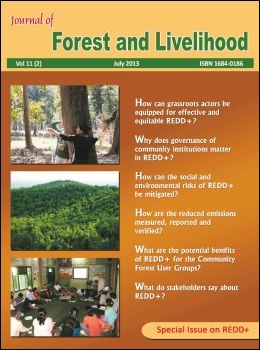Forest Monitoring, Measurement, Reporting and Verification: from Principle to Practice
DOI:
https://doi.org/10.3126/jfl.v11i2.8621Keywords:
Climate Change, UNFCCC, REDD , MRV, CO2Abstract
Under the United Nations Framework Convention on Climate Change (UNFCCC), many tropical developing countries have agreed to participate in the Reducing Emissions from Deforestation and Forest Degradation as well as conservation and enhancement of carbon stocks and sustainable management of forests (REDD+) programme so as to receive payments for their contribution in reducing emissions from forestry sector. The emission reduction is measured in terms of quantifications of carbon dioxide (CO2) equivalent, upon which payments are made. To quantify emissions in terms of CO2 equivalent, a process called measurement/monitoring, reporting and verification (MRV) has been developed, which forms the backbone of performance-based payment under the REDD+ mechanism. This paper primarily reviews the principles and methods of MRV. By taking the case of the Terai Arc Landscape (TAL) of Nepal, a sub-national level proposed project, the paper demonstrates how an institutional mechanism for MRV can be designed and practiced at national level considering national circumstances and existing institutions. Also, the cost effectiveness and transparency of the MRV process are identified as important elements.
DOI: http://dx.doi.org/10.3126/jfl.v11i2.8621
Journal of Forestry and Livelihood Vol.11(2) 2013 46-54
Downloads
Downloads
Published
How to Cite
Issue
Section
License
CC-BY-NC: This license allows reusers to distribute, remix, adapt, and build upon the material in any medium or format for noncommercial purposes only, and only so long as attribution is given to the creator.





